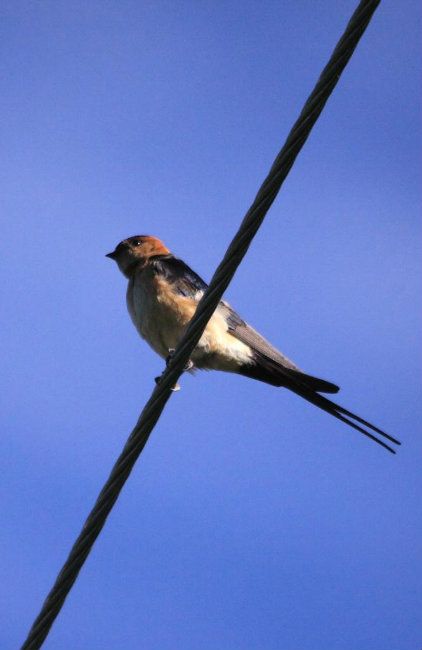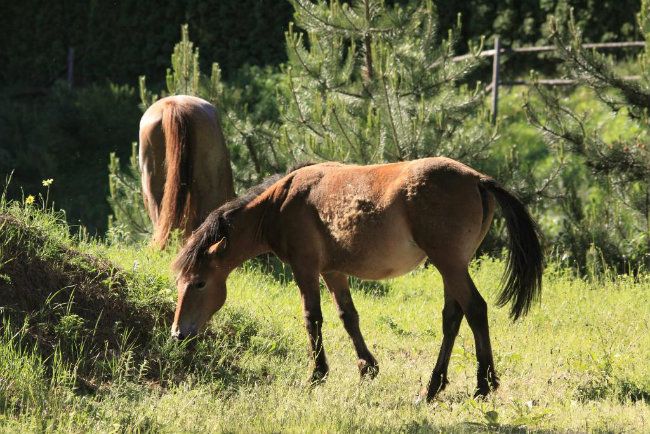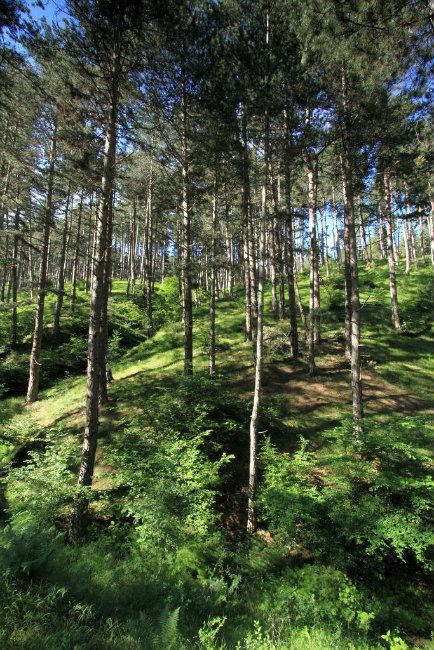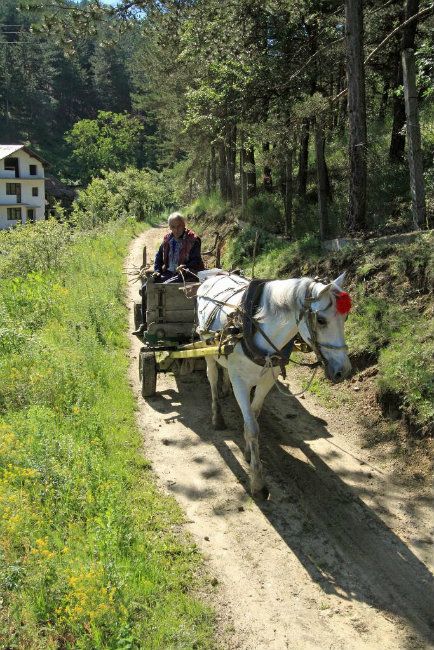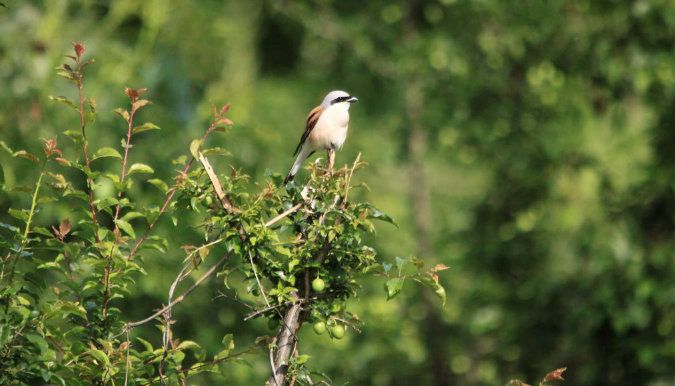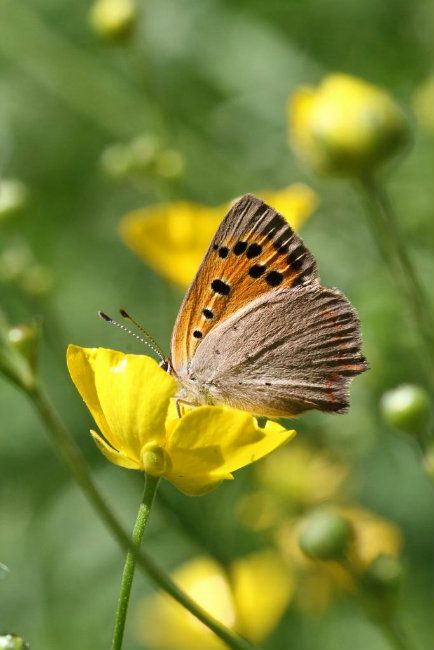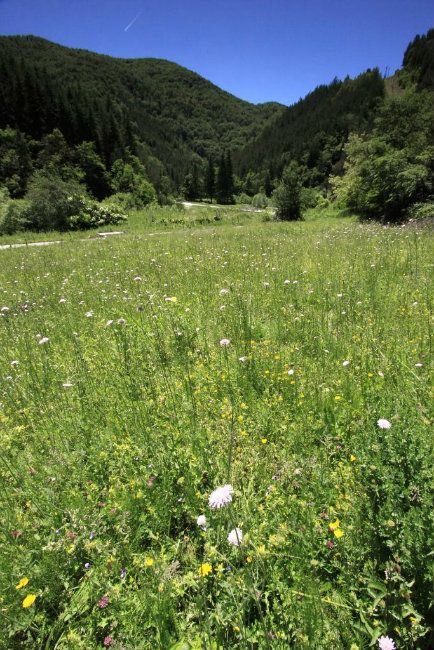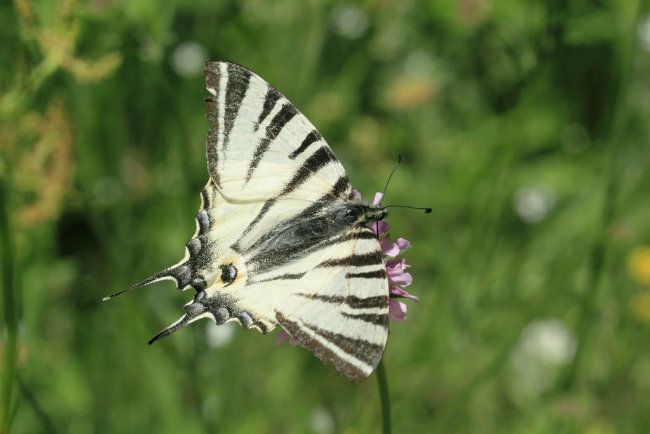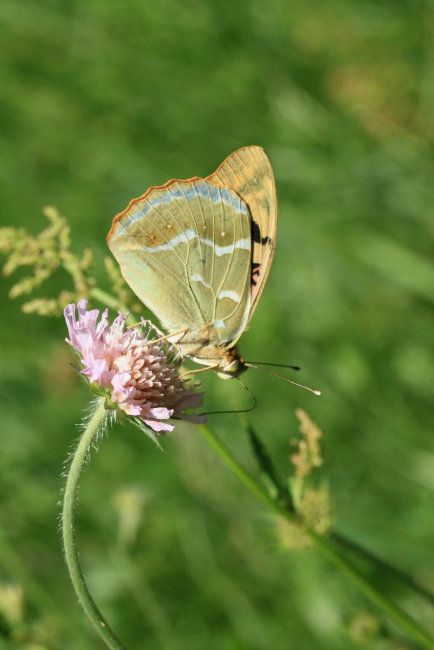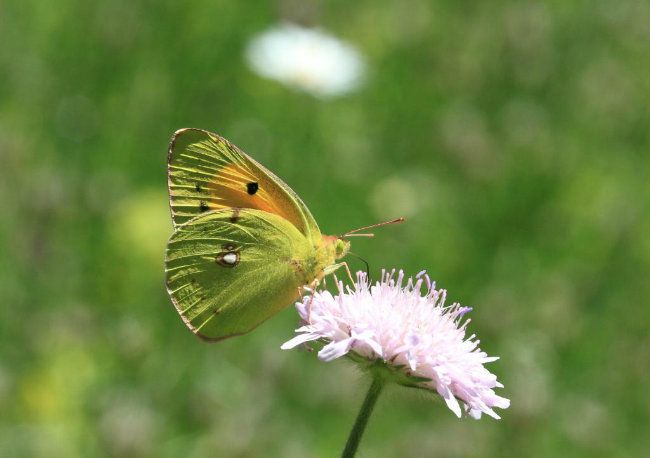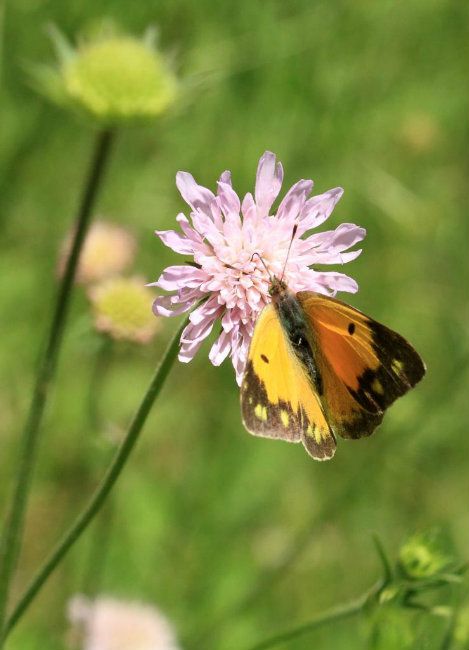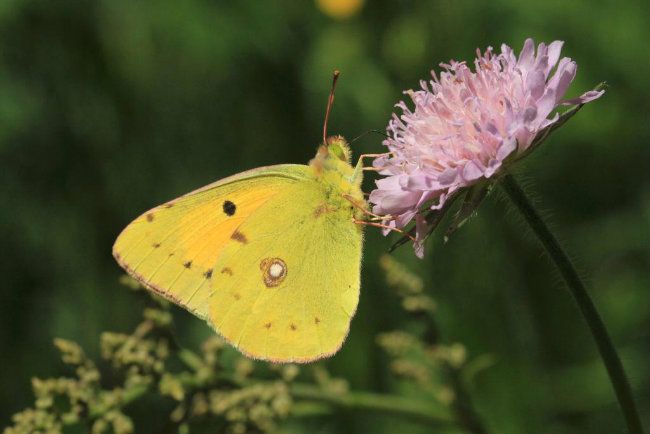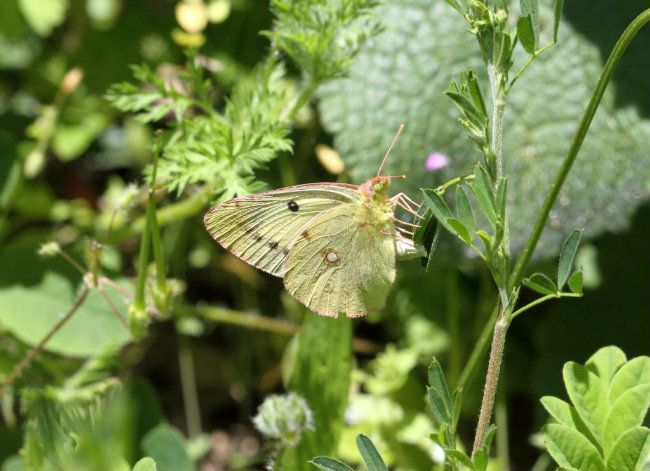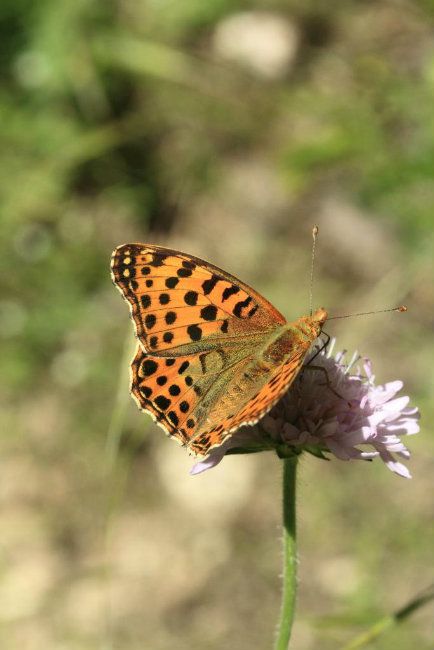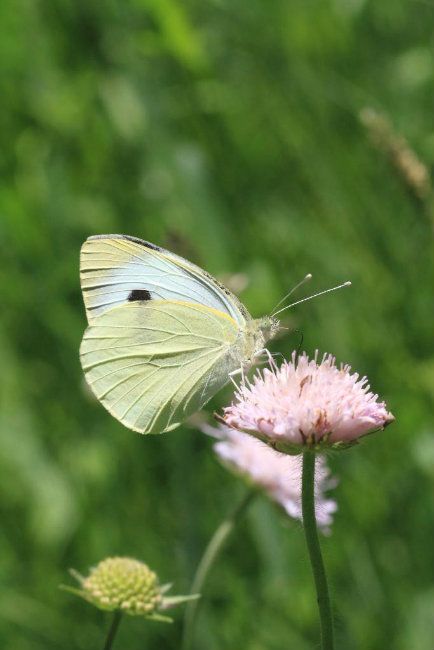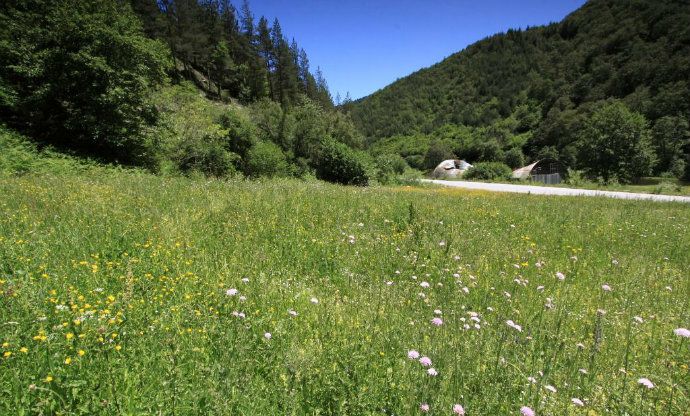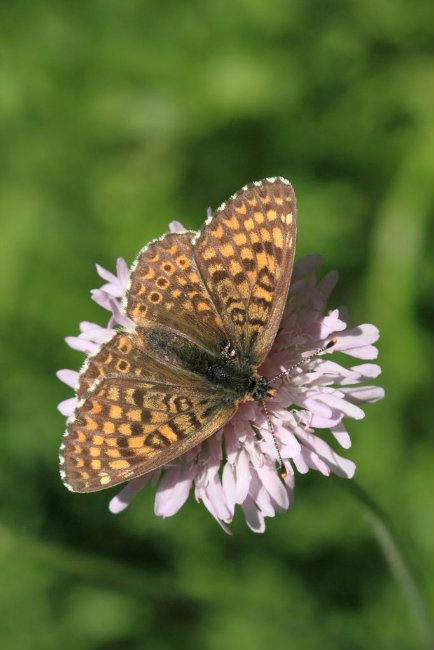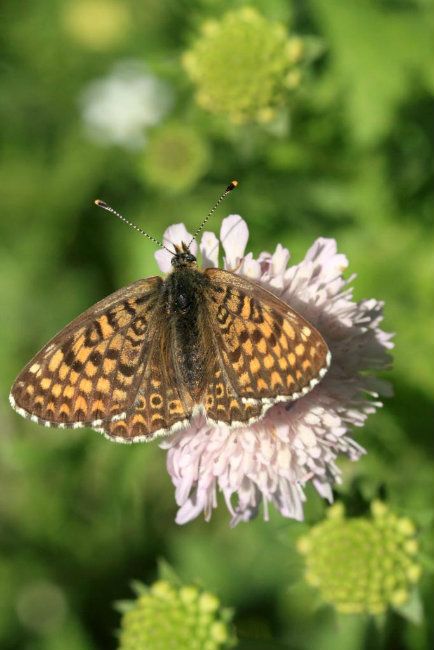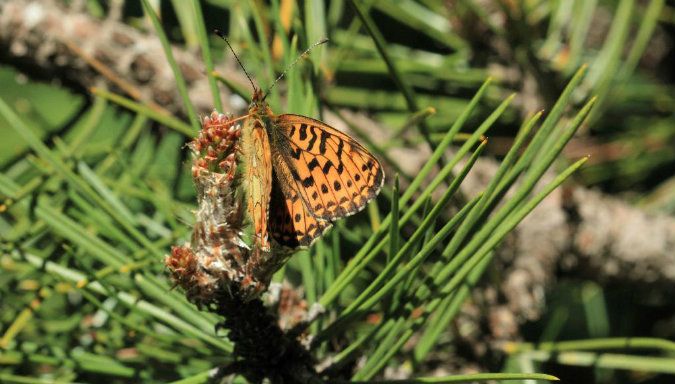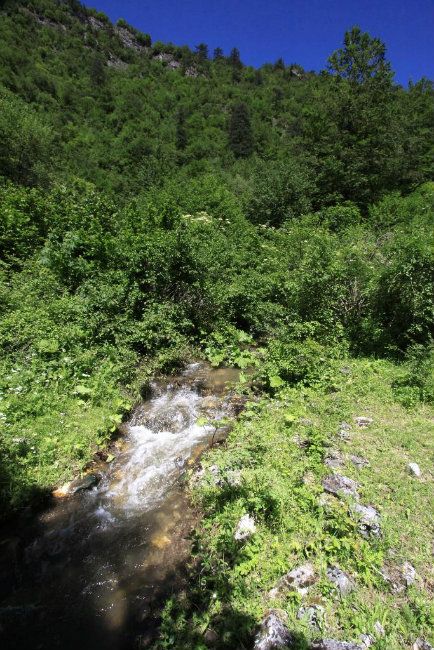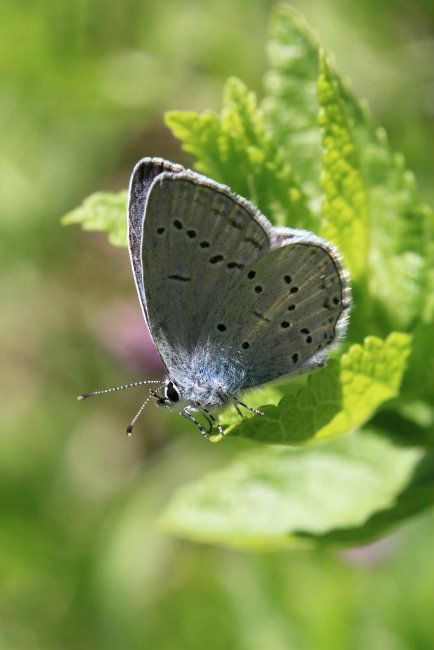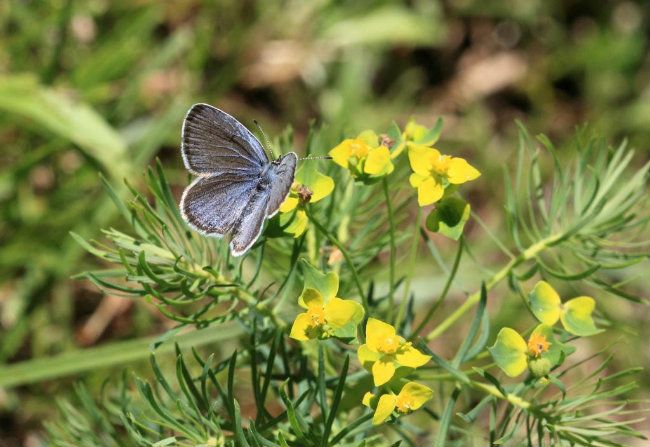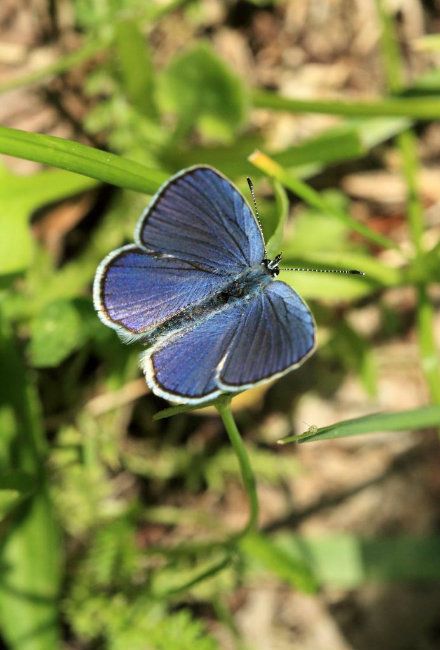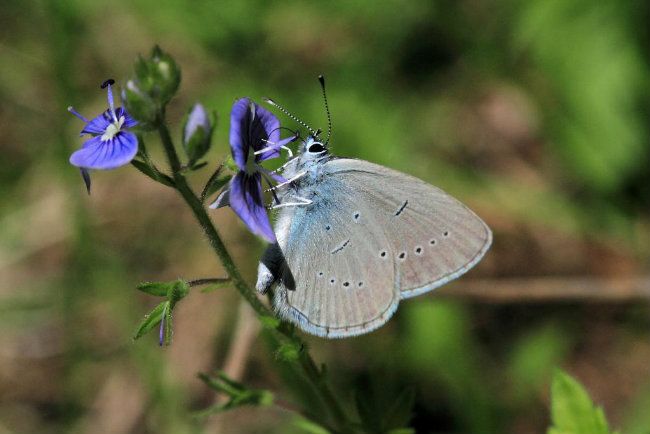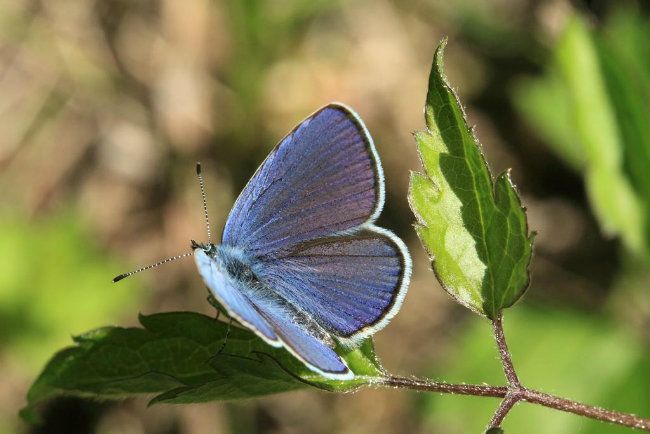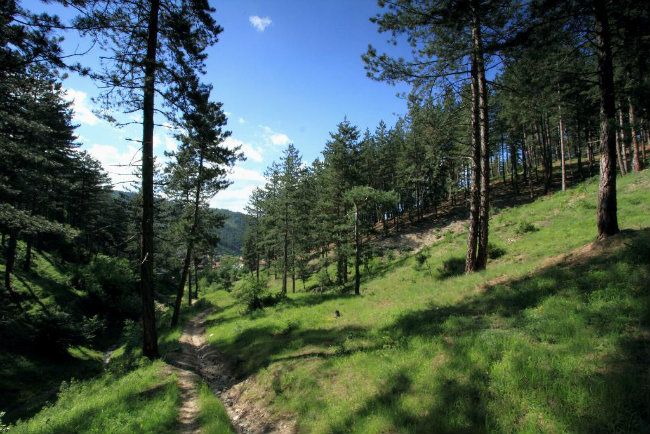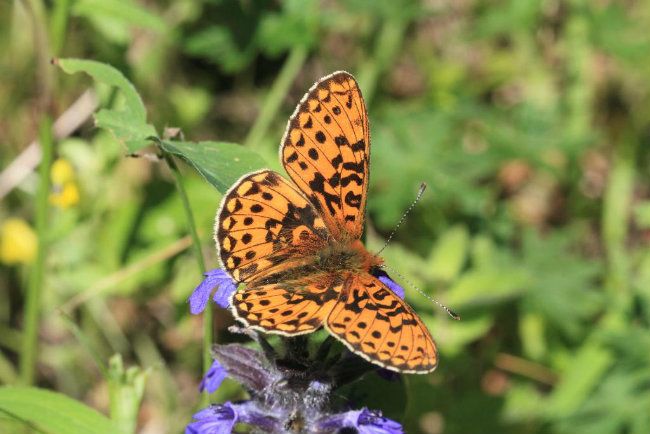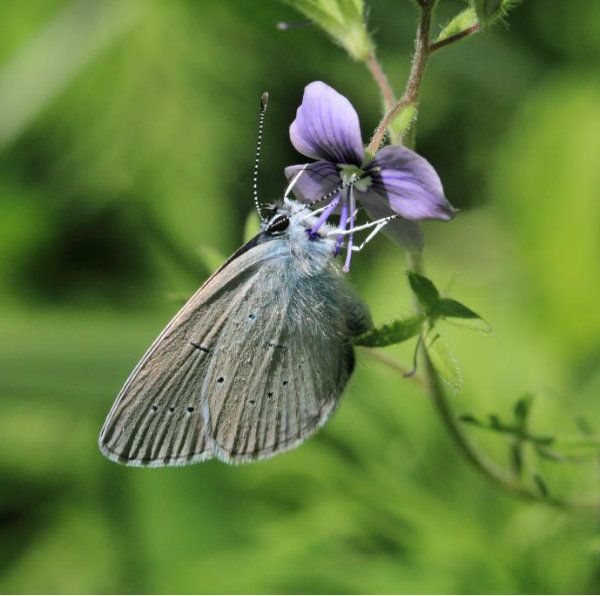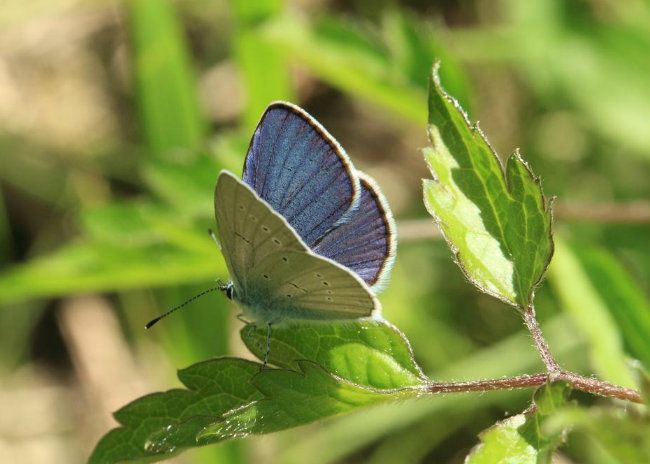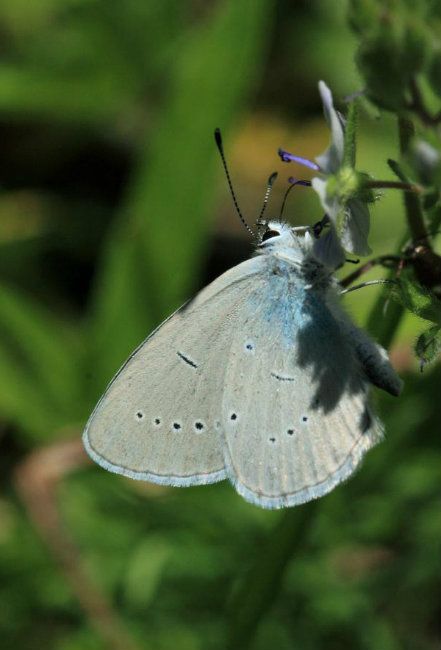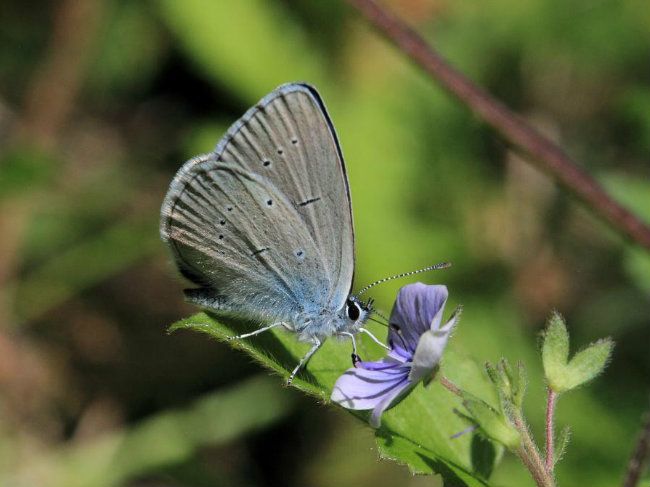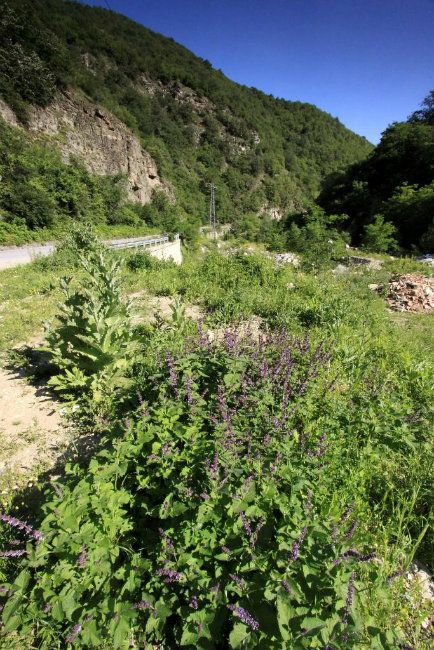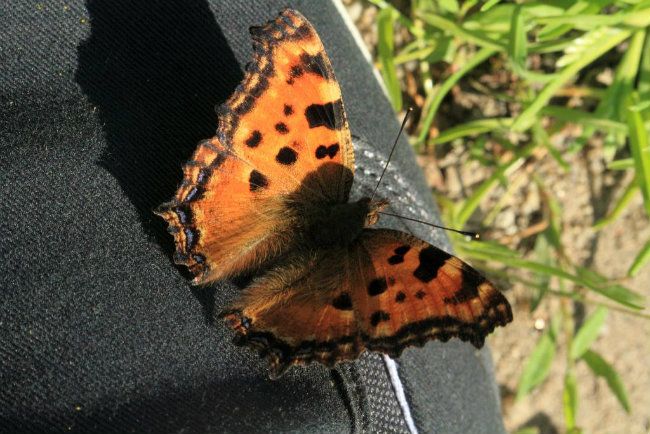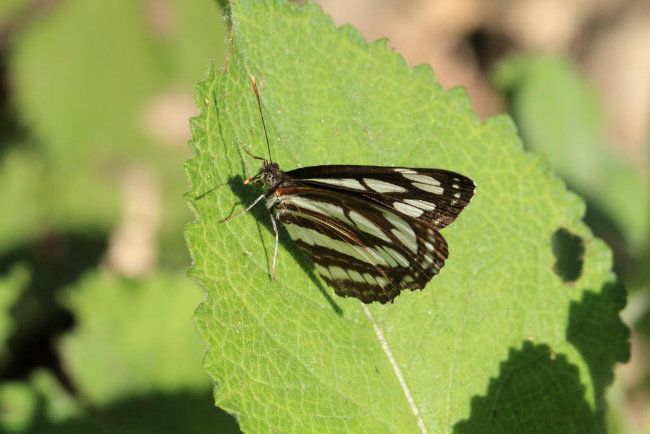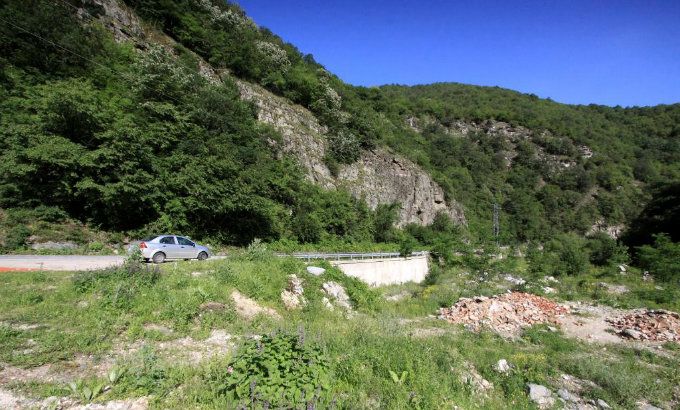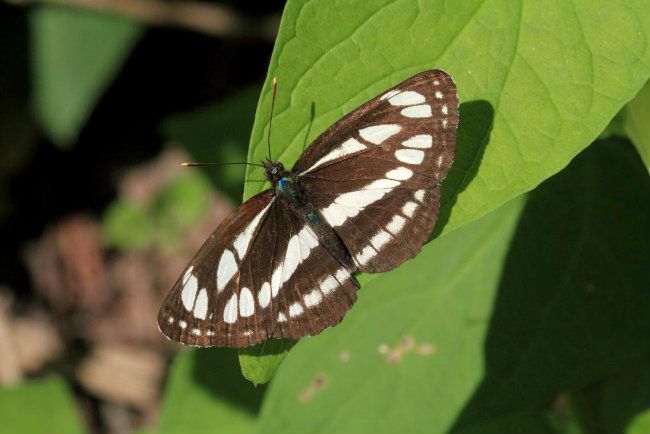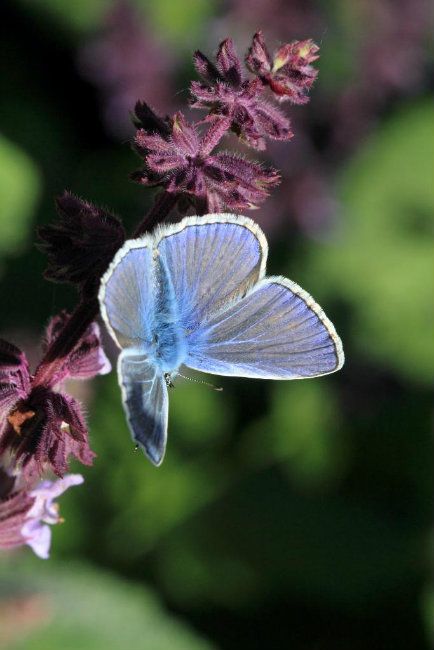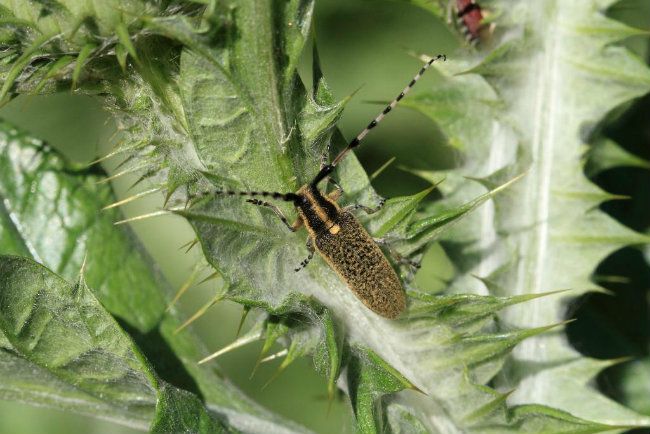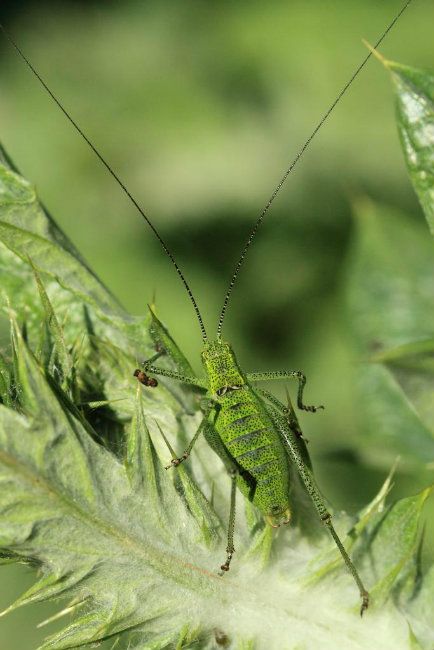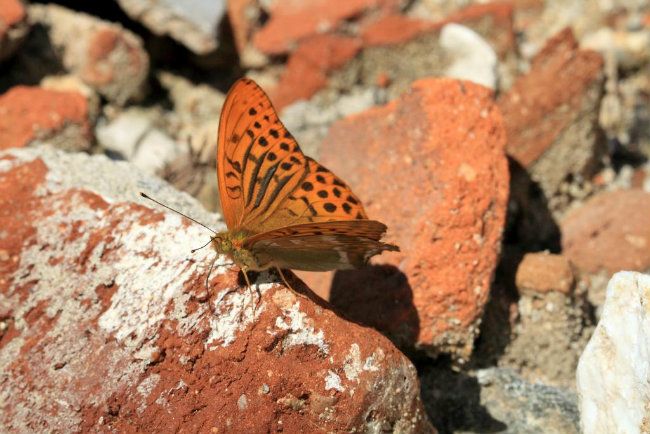The good weather continued as we followed the main dirt track further along the landscape: there were plenty of muddy puddles in the middle of the path, and one still had a Bullfrog in it. I wasn’t sure if this Bullfrog was dead or not, but when we returned later in the day it had disappeared. There were plenty of Blues getting minerals from the path, and I could get fairly close to them as they were far more interested in the salts: only occasionally would they stop their behaviour when the breeze would suddenly blow them, causing the blues to fall like a line of dominoes, suddenly showing their underwings. Also worth noting to the side of the ride were Clouded Yellows, Queen of Spain and Glanville Fritillaries: some of the Clouded Yellows, presumably the females, looked disproportionally large for the species, much nearer to the size of Large Whites. If I didn’t know better I would have thought these were another species entirely (nevertheless all the males were the smaller, standard size that I was used to).
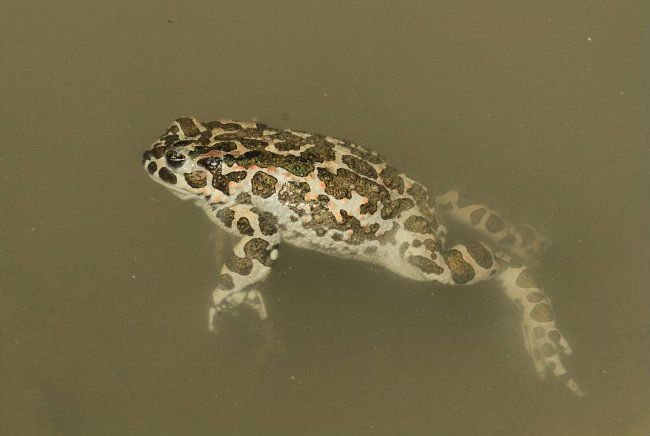
Bullfrog in one of the bigger dirty puddles along the dirt track.

A close-up of the Bullfrog: not sure if he's alive or not, but he was gone when we passed this puddle later on.
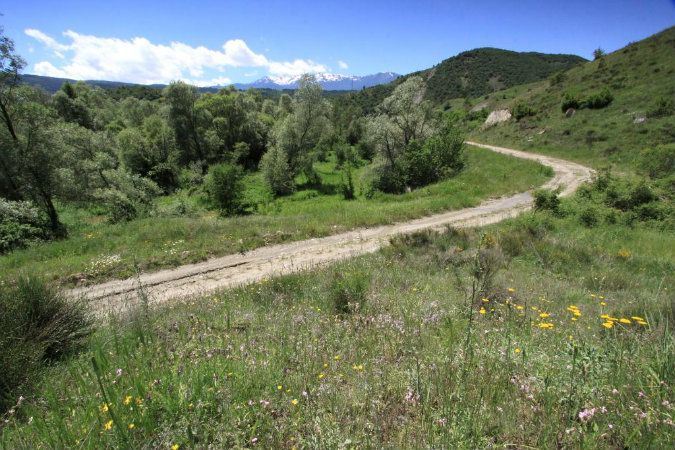
The view of the route further along the dirt track, with the river hidden by the lush grass and bushes.
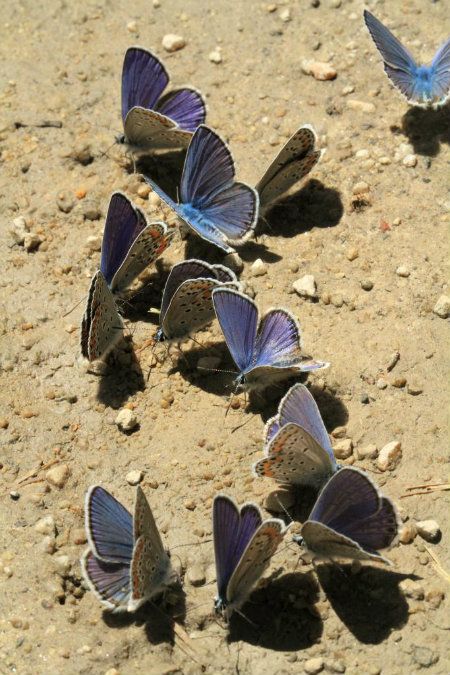
A range of the Blues mud-puddling on the path.

The Blues are only disturbed when a stronger breeze blows, making them close their wings and fight to hold their ground..
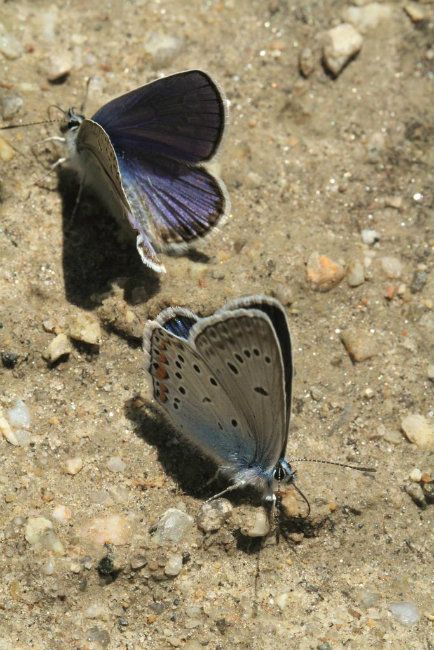
Two of the Blues collecting salts from the path.
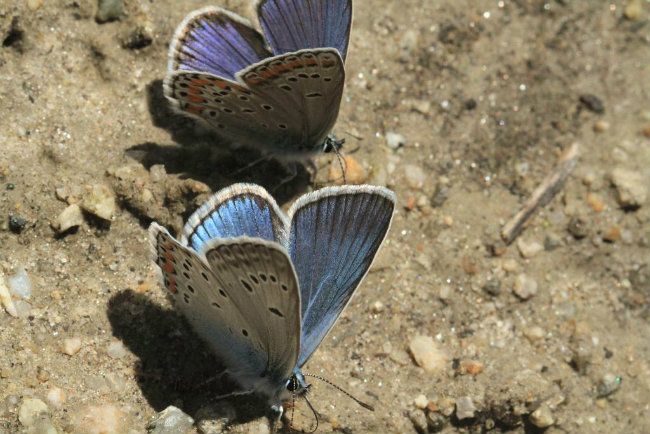
A closer view shows a distinct difference in the interior wing colour...
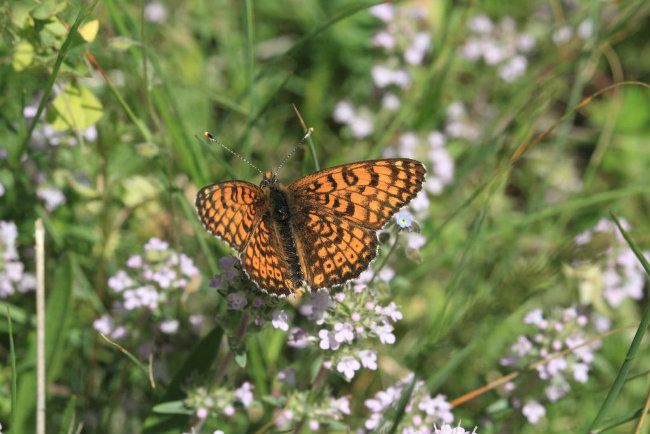
One of the Glanville Fritillaries nectaring from Marjoram at the side of the path.
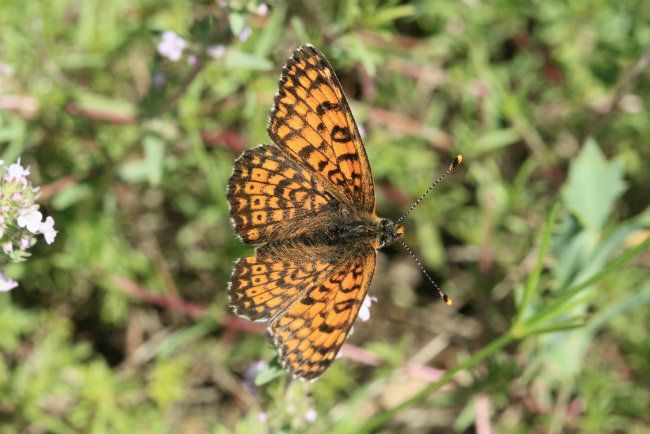
A closer view of the Glanville Fritillary.
Further along the ride we could cut down to the edges of the river: I followed this down as here most of the Eastern Festoons on the walk were congregating. They rarely stopped long, and in this much wetter and lush section this seemed to be where they would court and breed, only flying up to the dirt track above for the flowers there. Also coming down to the river area were, perhaps surprisingly, quite a few of the Black Hairstreaks. They seemed to have come down to the tall Umbellifers near to the river for some shade – I’d not seen this behaviour before in Black Hairstreaks in Britain, maybe it is because our temperatures rarely got this hot!
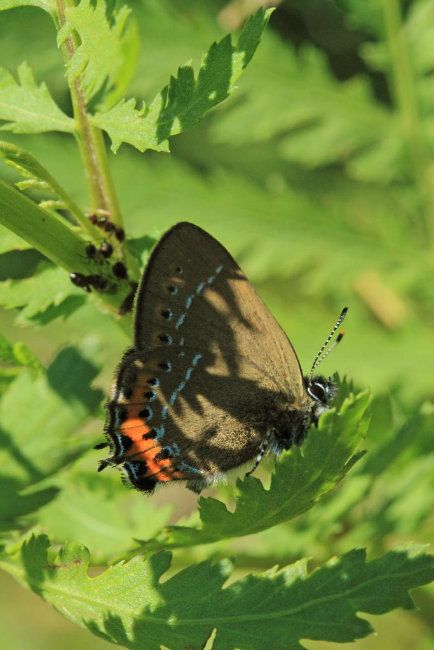
One of the multiple Black-Hairstreaks that now congregated near the river and the shade of the Umbelllifers there.
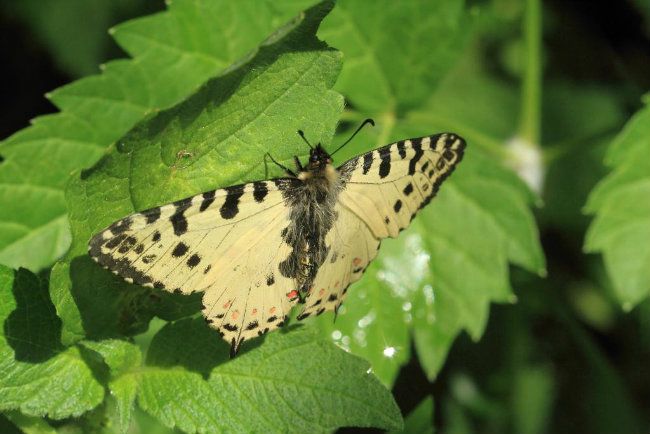
An Eastern Festoon stops briefly near the river edge.
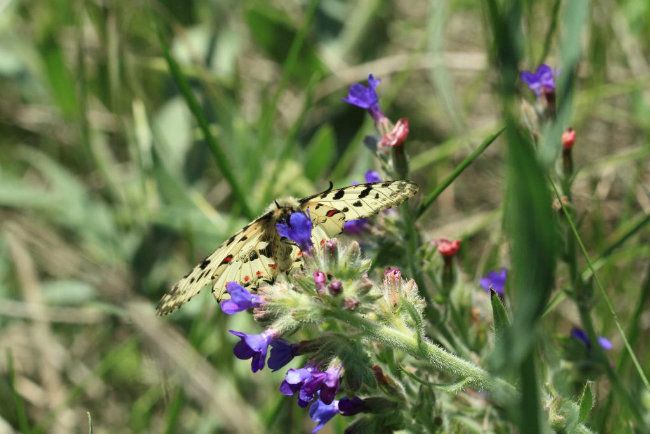
One of the Eastern Festoons beside the dirt track - plenty of nice wildflowers here including Vipers Bugloss.
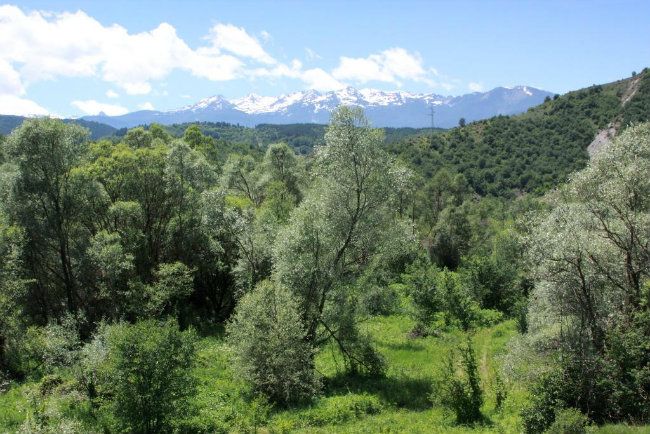
The view over the trees showing the edge of the Pirin Mountains a bit more clearly.
After about half an hour near spent by the river edge - watching the butterflies and listening to the croaking bullfrogs – we scampered back up to the dirt path above the river. On the path this time there was a really fresh and stunningly bright orange Fritillary – this turned out to be a newly hatched Niobe Fritillary, the first time I had seen this species. In the heat of the day the butterfly would fly back and forth along the ride but eventually would stop on the path to obtain salts from the path, long enough for me to get some close views. The butterfly was a real gem and was the best sighting of the afternoon: this area was also a great point to take in views of the distant landscape with the Pirin Mountains behind, and also to view the edge of the nearby river as it curved round the lower mountain slopes. By now it was getting to mid-afternoon so we started heading back to the car – and only now would we realize how sunburned we’d got – no doubt due to the fact that the temperature had been disguised all day by the slight breeze.
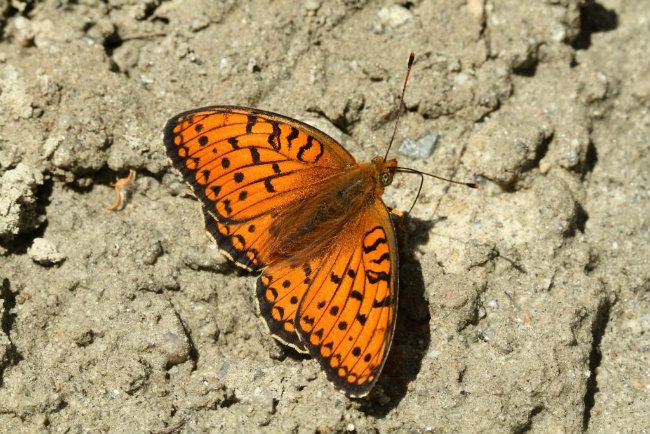
The first close view of the newly-hatched Niobe Fritillary.
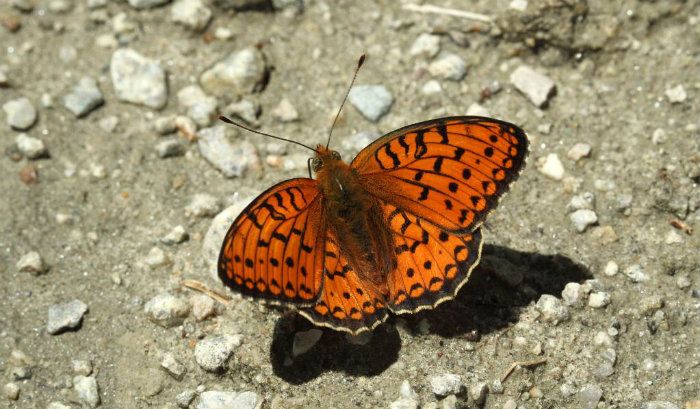
A stunning butterfly, this Niobe Fritillary almost looked unreal, with such a vivid orange in the bright afternoon sun.
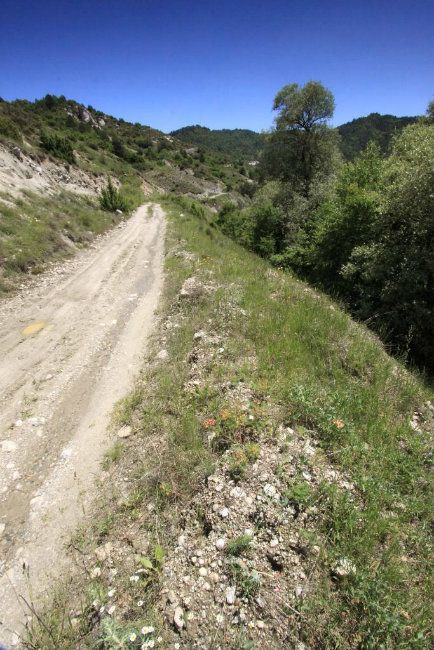
Looking the other way towards the far hills, with the dirt track and edge dropping into the nearby river.

It was quite hard to get down on the path and not disturb the Niobe Fritillary, but eventually I would get a good underside shot.
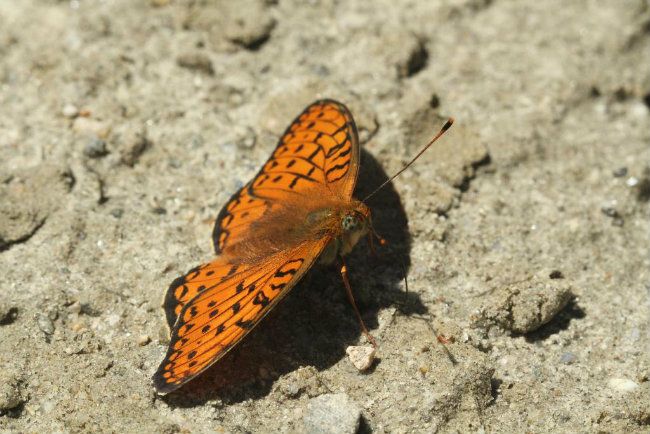
Getting close enough to watch the Niobe Fritillary feeding - a real joy.
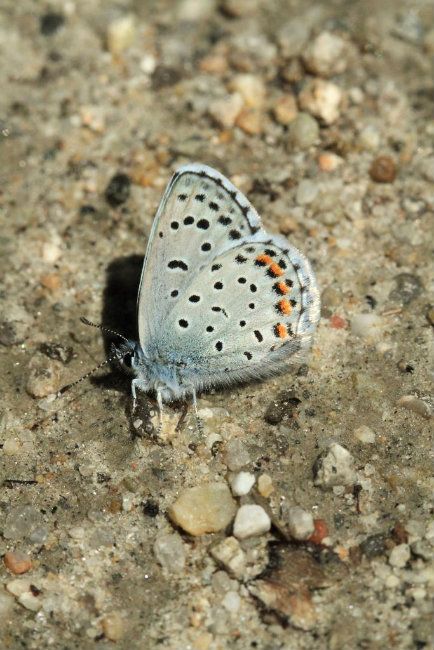
I almost forgot this shot of a Blue on the track just as we were leaving. The nearest butterfly I can match to it is Pseudophilotes Vicrama.
I'm not sure if there is even a common name for Pseudophilotes Vicrama (presumably it would be Eastern Bavius Blue)?.
The journey back through the mountain road from Eleshnitsa to Velingrad is quite picturesque and has some lovely villages and towns viewed from the road. I admit I should have stopped and taken some more photos of the landscape but with a near two-hour drive we were quite keen to get back. The best I could do were a few quick shots taken from the car, as we zig-zagged between the usual Bulgarian pot-holes. We stopped briefly on the way back, at the mountain village of Yundola – here we had a few minutes watching the Clouded Yellows and Small Tortoiseshells in the mountain meadows before continuing home to Velingrad. Today was the first day when there was no thunderstorm to break the weather up – and the good weather was set to continue – so although the evening still had plenty of warmth and sunshine we were too tired to venture out again!
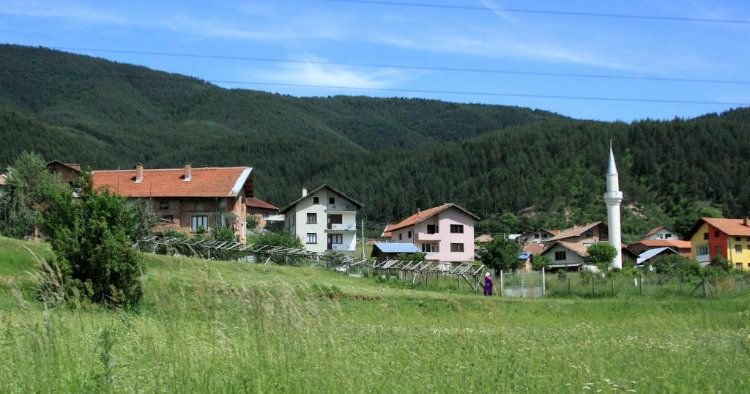
A quick snapshot of one of the Mountain valley villages as we head back to the hotel.
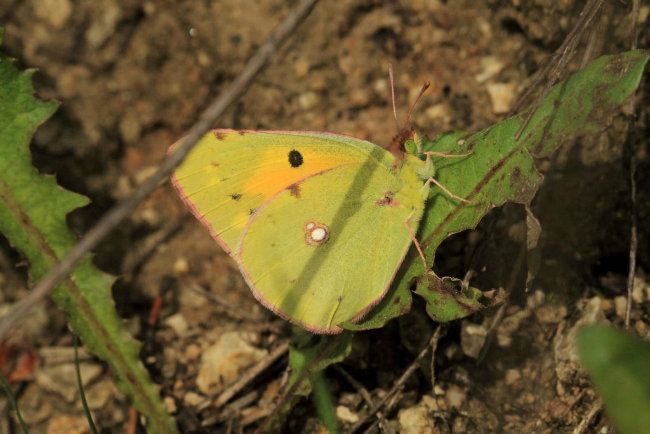
A brief walk in Yundola - about half an hours drive from Velingrad - yields many Clouded Yellows.


